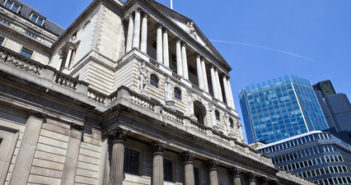The disconnect between the Bank of England’s upbeat assessment and markets’ dim views is unlikely to hold up – and GBP/USD is set to react.
The BOE’s rate decision, meeting minutes, and Quarterly Inflation Report (QIR) are due out on Thursday, August 1st, at 11:00 GMT. Governor Mark Carney will hold a press conference at 11:30 GMT.
When the bank last released its QIR in early May, the US and China seemed close to clinching a trade deal, the Brexit deadline had just been pushed back to October, and prospects for the economy were rosy.
Back then, the central bank has been aiming to raise interest rates as inflation, and wage growth have been upbeat – assuming a smooth Brexit. The BOE’s repeated stance now faces a “sea change” as Carney put it recently.
Global slowdown and Boris Johnson mark the difference
Starting from external factors, the global economy is slowing down amid the breakdown in trade talks between the world’s largest economies and other factors. Central banks have responded by either abandoning their hawkish biases, hinting of rate cuts or cutting rates altogether.
The world’s most powerful central bank – the Federal Reserve – is set to reduce its benchmark rate for the first time since the crisis. The Fed’s move – coming less than 24 hours before the BOE – is a remarkable turnaround for the slow-moving institution that has raised rates as late as December.
On this background alone, it is hard to see the BOE stick to its aim to increase rates.
And then there is Brexit. We now know that the March 29th Brexit deadline caused companies to stockpile in March and then sharply reduce output in April. Forecasters now acknowledge that the UK economy may have contracted in the second quarter.
More importantly, the prospects for a hard Brexit. The new British government led by PM Boris Johnson has ramped up preparations for a no-deal Brexit. Michael Gove, a senior minister that chair’s one of Johnson’s newly created Brexit committee, has said that “No deal is now a very real prospect.” The pound has plunged in response.
For the BOE to continue assuming an orderly Brexit as a base case scenario would take a leap of faith – or fear from politicians’ criticism. The bank and Carney personally have come under fire for forecasting gloomy scenarios before the 2016 EU Referendum.
Both options are on the table, and various nuances could make the difference between a positive GBP reaction and an adverse one.
Here are five scenarios:
1) Removing the hawkish bias, assuming smooth Brexit
By saying that the bank will “act as needed” amid global headwinds and uncertainty, the BOE would align itself with other central banks and avoid criticism in the UK. It would also make sense to respond to the slowdown in the local economy by forecasting lower inflation down the road and abandoning the need for rate hikes.
The scenario has the highest probability. While a shift from hawkish to neutral may weigh on the pound but such an outcome is probably priced in and could lead to a bounce afterward. GBP/USD may finish the day higher on a “buy the rumor, sell the fact” event. It has the highest probability.
2) Removing the hawkish bias, assuming a hard Brexit
In this scenario, the BOE will have aligned itself with markets – and with Michael Gove. While Boris Johnson’s tough stance on Brexit and the nominations of hardliners may only be part of an election campaign, the rising fears of leaving without a deal have an impact on the real economy.
In such a scenario where the independent authority is assuming severe economic damage, GBP/USD may extend its downfall and lose significant ground. The probability is medium.
3) Maintaining the hawkish bias, expressing concern
The BOE may want to refrain from rocking the boat and angering politicians too much. Moreover, the recent jobs report remains upbeat and supports raising rates. The “Old Lady” may settle for marginally lower inflation forecasts and concern about the local and global economy.
In this scenario, GBP/USD could rise. It has a medium probability.
4) Maintaining the hawkish bias, but two members voting for a cut
This scenario is similar to the previous one, but with two members standing out with a bolder stance. Such a contradiction – seven members supporting future hikes while two others voting for an imminent reduction could confuse traders and confuse.
However, it would show that fear about a no-deal Brexit has reached the central bank and could result in a rate cut. Markets may begin believing that this is the direction the BOE is going to.
In this scenario, which has a low probability, GBP/USD may fall.
5) Maintaining the hawkish bias, expressing business as usual
In this low probability scenario, the BOE sticks to hard data about jobs and inflation and refrains from rocking the boat. The fear of criticism by a government dominated by ministers who see a bright future also with Brexit means that such an outcome cannot be ruled out.
GBP/USD may shoot upon such unlikely optimism, but may later fall as the bank may see its credibility eroding.
Conclusion
The Bank of England’s Super Thursday may be significant for GBP/USD that is already experiencing high volatility. The BOE is likely to drop its intention to raise rates but may refrain from aligning itself with markets’ growing fear of a hard Brexit. The variety of options will make a significant difference in the pound’s reaction.
Get the 5 most predictable currency pairs
5 scenarios for GBP/USD on the BOE’s Super Thursday
